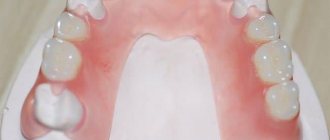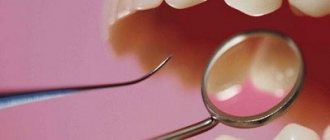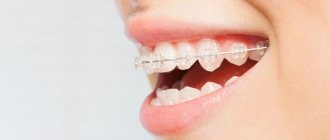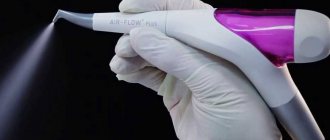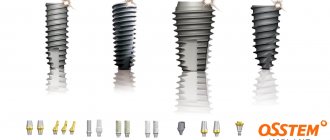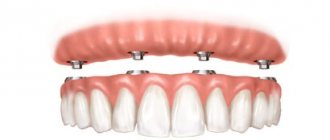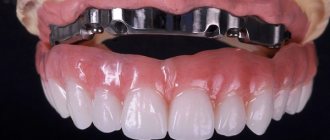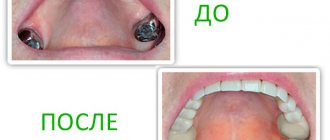Light-curing fillings are currently the most preferred material for restoring damaged teeth in therapeutic dentistry. Their peculiarity lies in the ability to harden only under the influence of a special light wave. This property allows the dentist to carry out all necessary activities efficiently and reliably. At the same time, Charisma filling material, produced by the German company Heraeus Kulzer, is a leader among light-curing composites, as proven by various studies conducted among analogues.
What are the fundamental differences between ceramic inlays and fillings?
The filling is created by layer-by-layer filling of the material and processing it with a lamp. This means that bottlenecked amphora-shaped cavities can be filled without widening the neck. In the case of small fillings, the technology is good enough that there is nothing to change about it other than generations of materials. In the case of large fillings, shrinkage of the material creates a cavity (long gap) between the filling and the tooth tissue. The filling almost does not begin to “hang out” in the amphora-shaped cavity, but this gap is a fairly large opportunity for bacteria to enter this space and cause relapse of caries. Recurrence of caries under a large filling is the most common complication and the most common problem with large fillings. In this case, the filling cannot come out of the cavity because the neck is narrow. At the same time, the distribution of the load on the tooth suffers, so you can then expect a chip - a broken tooth due to the lack of sufficient structural strength of the remaining tissues.
Here is an example of a large seal that has depressurized and its replacement with a tab:
Before.
At the treatment stage.
After.
The insert is machined to fit a specific cavity and inserted into it with an accuracy of 1/10 of a millimeter. It is fixed with essentially the same material from which the filling is made, but this layer is very thin and acts as glue. Its shrinkage has almost no effect on the strength of the connection. The strength of the connection is almost comparable to chemical bonds (but in practice these are micromechanical connections). The tab can be removed only by sawing it out, while the filling is often removed with tweezers after five to six years. The service life of the filling is only up to eight years, with the expansion of indications and the gap being two to three times less. The service life of the tab is up to 25 years, and it is very easy to extend it. In practice, I glued tabs placed on early polymers that were just about that old. Modern materials should provide lifelong service, but it has not yet been possible to check.
An inlay is often more aesthetically pleasing because it allows you to design the shape of the tooth much more accurately and ensure minimal differences in the appearance of the material.
The inlay is fixed in the same way as a filling: the monomeric material polymerizes under the influence of light at a wavelength of about 400–500 nm. The ceramic inlay is partially transparent, like a natural tooth, but is inserted as a whole product, which requires a different lamp power to polymerize the lower layers of the bonding material. This is another reason why they are rarely used in a regular clinic: you need a lamp not for 200–350 dollars, but for 1,000–2,000. On the other hand, if the inlay is thick enough, then you can use dual-curing cements and do without an emitter.
Aspirin
Aspirin got its name from the meadowsweet - Spiraea ulmaria, a plant containing salicylic acid. The ancient Greeks knew about the healing properties of this substance. German chemists from the Bayer laboratory managed to create a formula for medical use based on it. So in 1897, acetylsalicylic acid appeared, which is used as an analgesic and anti-inflammatory agent.
The pills that changed the world
More examples
Example 1:
Here the tooth is cracked due to a large filling.
Example 2: filling with usual indications
Given:
Correct fillings:
Marcumar, warfarin, Plavix...
Medications against blood clots are familiar to people with a prosthetic heart valve or atherosclerosis. The first anticoagulant was heparin. 100 years ago, a medical student from the United States isolated it from the liver of a dog. The first oral anticoagulant was discovered in the 1920s by analyzing moldy sweet clover silage. Cows that ate it died from blood loss after simple operations.
The pills that changed the world
Are inlays better than fillings?
Like any type of treatment, it is neither good nor bad in general, but there is always a choice depending on the indications. In Russia, historically, composite filling materials have been used very widely, and there are doctors with excellent manual skills who can make anything out of them. Formally, you can even build a house from a composite, illuminated by a lamp. This allows you to expand the readings. This is more than justified in regional clinics, when the patient is short on funds or simply does not have access to the necessary equipment. In clinics with access to intraoral scanners and an in-house or independent ceramic laboratory, expanding indications is not medically acceptable. From an economic point of view, let’s say, these are borderline cases.
Our CNC milling machine.
Miracle pill
Viagra quickly became a worldwide bestseller. In 1998, American scientists Robert Furchgott, Louis Ignarro and Ferid Murad were awarded the Nobel Prize for the development of its medicinal formula. Later it turned out that the active ingredient sildenafil also helps against the withering of plants or fear of heights in climbers. In the photo: King Carl XVI Gustaf of Sweden presents the Nobel Prize to Ferid Murad.
The pills that changed the world
Why is precision inlay design necessary?
For small interventions, manual precision work with fillings and additional correction is sufficient.
In large reconstructions, it is often necessary to restore the cusps on the teeth that ensure proper contact. We build an occlusal compass to model the oral cavity so that movements are limited, that is, to ensure the correct mechanics of teeth closure. It is basically impossible to do the same thing in the mouth using filling material. Yes, you can achieve aesthetics with fillings, but correct mechanics with large interventions with several teeth is almost never possible. When a filling is required not on top, but on the side surface of the tooth, it is necessary to restore the contact point (so that the thread passes with a click): this is necessary so that food does not pass down and injure the periodontal papilla. It is very difficult to restore the contact point with the correct anatomy. In addition to the contact point itself, there is an approximal ridge with a triangular fossa. He rolls the food bolus not between the teeth, but towards the chewing surface of the tooth:
On a filling it is often not easy to do this manually. And another difficulty is when we have a defect on the side, and it is critically important that the restoration or filling is level with the level of the tooth: if it is wider, then food will get there and there will be caries below. If already, there will be a step that will create mechanical difficulties.
Hormonal contraceptive
The beginning of the sexual revolution was the invention of birth control pills. In 1961, the first oral contraceptive appeared on the US market, and later in Germany, where it caused protests from moral guardians. In the GDR, contraceptives were initially issued only to married women with children. Today in industrialized countries it is the most common means of protecting against unwanted pregnancy.
The pills that changed the world
What else do you need to know about tabs?
The ceramic products themselves will be found unchanged at the excavations of your home.
Most likely, your remaining teeth will degrade, but the inlays will remain the same. But the material that creates micromechanical connections with the hard tissues of the tooth degrades and accumulates mechanical fatigue. Research is currently underway to improve its qualities. Of importance, composites based on glass ionomer cements have long been widely used. They are very friendly to dentin and release fluoride, which is a cellular poison for bacteria. It is impossible to make a filling entirely from such cements: it will be mechanically unstable and of poor aesthetics. We use this material if there are deep cavities or if we are concerned about possible inflammation of the pulp. We place a layer of this material under the inlay: the overall result is a structure that is good in relation to tooth tissues and is quite stable, capable of withstanding loads. Glass ionomer cement alone cannot withstand loads without an inlay. Inlays protect against hidden tooth defects. If a tooth with a filling cracks, this often means almost the same type of damage as when triplex glass is damaged: the fracture site and many microcracks are visible. Many of them are difficult to track, but in general the material is degrading. If such cracks reach the root, they become a gateway for infection and cause a purulent inflammatory process. This means much more complex consequences, including rapid loss of bone tissue: a defect is formed in the bone tissue, and then there is nothing to put an implant into. We will have to remove the tooth, augment it with xenogeneic bone or mixed with autogenous material.
From scanning to the finished restoration, the patient waits at least 40 minutes - this is design and milling. In complex cases, this is two hours; the median case in the clinic’s practice, taking into account cavity preparation, is about 90 minutes. An inlay for one tooth costs from 44,000 rubles, while a filling for one tooth costs from 9,000 rubles.
PS If you come to our clinics, then say that you are from Habr, there will be a 5% discount.
Antibiotics
In 1928, while examining colonies of staphylococci, Briton Alexander Fleming discovered spots of mold in Petri dishes, around which there were no bacteria. The antimicrobial drug penicillin he developed helped defeat such deadly diseases as pneumonia or tuberculosis at that time. Since then, a number of other antibiotics have been developed and are now used in the form of injections, tablets and suspensions.
The pills that changed the world
Antidepressants
Attempts to synthesize a drug to relieve depression have been made since the beginning of the 20th century. The first antidepressant was discovered in 1957 by accident. Doctors paid attention to the effect of iproniazid, which was used in the treatment of tuberculosis. The side effect was an increase in mood. Almost simultaneously, imipromin was developed in Zurich. To this day it is one of the most popular antidepressants.
The pills that changed the world
Reviews from patients and dentists
Dentists have different opinions about various fillings, but they agree that it is not so much the material that is important, but the quality of the installation. A cement filling installed in free dentistry can last more than twenty years, provided that the procedure is carried out competently and in compliance with all technologies. At the same time, a filling made from an expensive photopolymer, if installed incorrectly, can fall out of the tooth in just a couple of weeks. Experts advise paying attention first of all to the doctor who will perform the procedure and his level of professionalism.
There is also no consensus among patients, but the majority recognizes amalgams as a thing of the past and refuses to use them, preferring more modern photocomposites and glass ionomer cement.
Read also: Infiltration anesthesia in dentistry
Modern dentistry has come a long way compared to the times when only cement and “gold teeth” could be used as fillings. Today, doctors have at their disposal a variety of materials with a wide variety of physical, chemical and mechanical properties. The doctor has the opportunity to select the material in accordance with the needs and priorities of the patient.
The patient, in turn, has the opportunity to choose the option that suits him best. Metal and cement are gradually becoming a thing of the past, giving way to more modern materials that make it possible to create almost individual fillings.
